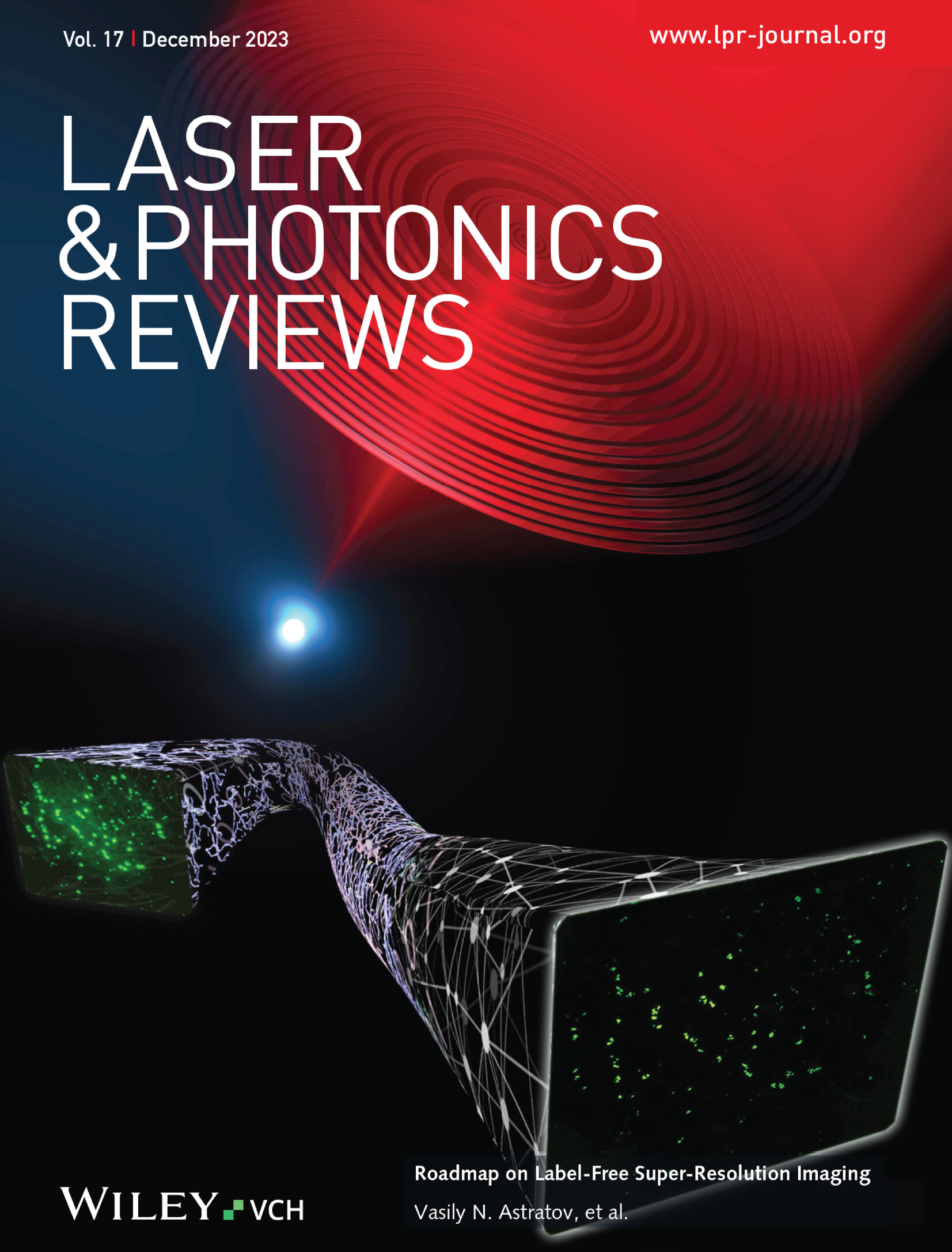近红外- II光场显微镜用于清醒小鼠颅骨血流动力学体积成像
IF 9.8
1区 物理与天体物理
Q1 OPTICS
引用次数: 0
摘要
对清醒动物的脑血流进行无创动态监测,对于全面了解与自然感觉运动活动相关的血流动力学至关重要。这需要高成像速度和显微镜的深层组织穿透。目前的第二近红外窗口(NIR - II, 1000-1700 nm)荧光显微镜技术,包括多光子显微镜和光片显微镜,由于低散射特性提供了更大的成像深度,但仍然受到其成像速度的限制。相比之下,光场显微镜(LFM)能够从单次拍摄中重建3D图像,促进高速体积成像,但穿透深度有限。本研究开发了一种NIR - II光场显微镜(NIR - II LFM)系统,结合颅骨清除治疗,用于清醒小鼠的脑血管实时3D监测。该系统具有高速和减少光散射的特点,可实现容积血管成像,监测血流动力学,并进行3D脑血流动力学分析。此外,在急性病理模型中,该系统可以通过清醒小鼠的颅骨实时观察大脑皮层的脑血栓形成。作为一种新颖的光学方法,NIR - II LFM不仅促进了体内脑血管系统的动态3D成像,而且在研究急性血管病变等方面也显示出独特的优势。本文章由计算机程序翻译,如有差异,请以英文原文为准。
NIR‐II Light Field Microscopy for Through‐Skull Hemodynamic Volumetric Imaging in Awake Mice
Non‐invasive, dynamic monitoring of cerebral blood flow in awake animals is essential to a comprehensive understanding of the hemodynamics associated with natural sensorimotor activities. This requires both high imaging speed and deep tissue penetration for microscopy. Current second near‐infrared window (NIR‐II, 1000–1700 nm) fluorescence microscopy techniques, including multi‐photon microscopy and light‐sheet microscopy, offer greater imaging depth due to low scattering properties, but are still limited by their imaging speed. In contrast, light‐field microscopy (LFM) enables 3D image reconstruction from a single‐shot, facilitating high‐speed volumetric imaging but with limited depth penetration. Here, a NIR‐II light field microscopy (NIR‐II LFM) system is developed for real‐time 3D monitoring of cerebral blood vessels in awake mice, combined with skull‐clearing treatment. With high speed and reduced light scattering, the system achieves volumetric vessel imaging, monitors blood flow dynamics, and performs 3D cerebral hemodynamic analysis. Additionally, in an acute pathology model, the system enables real‐time observation of cerebral thrombus formation in the cortex through the skull in awake mice. As a novel optical approach, NIR‐II LFM not only facilitates dynamic 3D imaging of cerebral vasculature in vivo but also demonstrates unique advantages in studying acute vascular pathologies and beyond.
求助全文
通过发布文献求助,成功后即可免费获取论文全文。
去求助
来源期刊
CiteScore
14.20
自引率
5.50%
发文量
314
审稿时长
2 months
期刊介绍:
Laser & Photonics Reviews is a reputable journal that publishes high-quality Reviews, original Research Articles, and Perspectives in the field of photonics and optics. It covers both theoretical and experimental aspects, including recent groundbreaking research, specific advancements, and innovative applications.
As evidence of its impact and recognition, Laser & Photonics Reviews boasts a remarkable 2022 Impact Factor of 11.0, according to the Journal Citation Reports from Clarivate Analytics (2023). Moreover, it holds impressive rankings in the InCites Journal Citation Reports: in 2021, it was ranked 6th out of 101 in the field of Optics, 15th out of 161 in Applied Physics, and 12th out of 69 in Condensed Matter Physics.
The journal uses the ISSN numbers 1863-8880 for print and 1863-8899 for online publications.

 求助内容:
求助内容: 应助结果提醒方式:
应助结果提醒方式:


